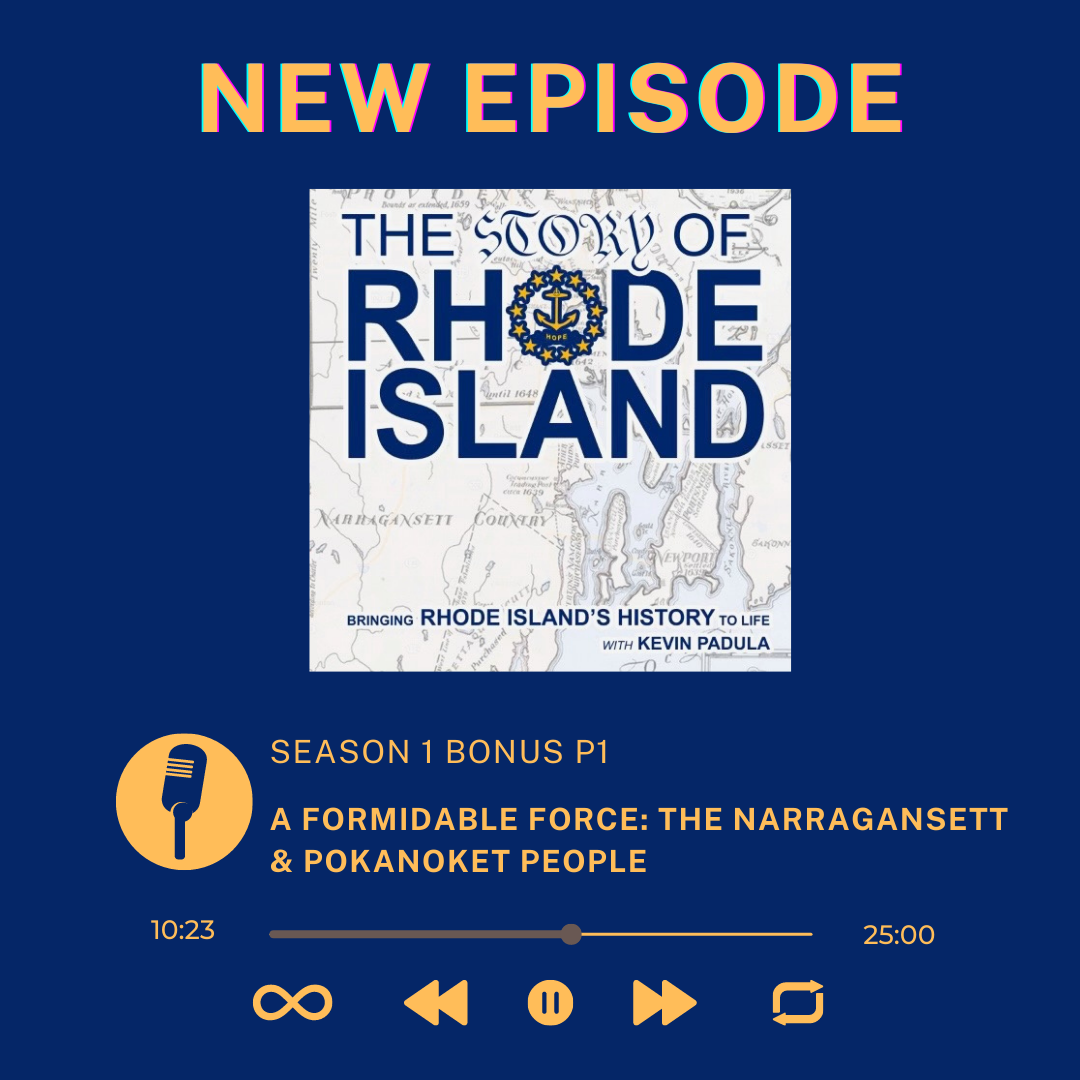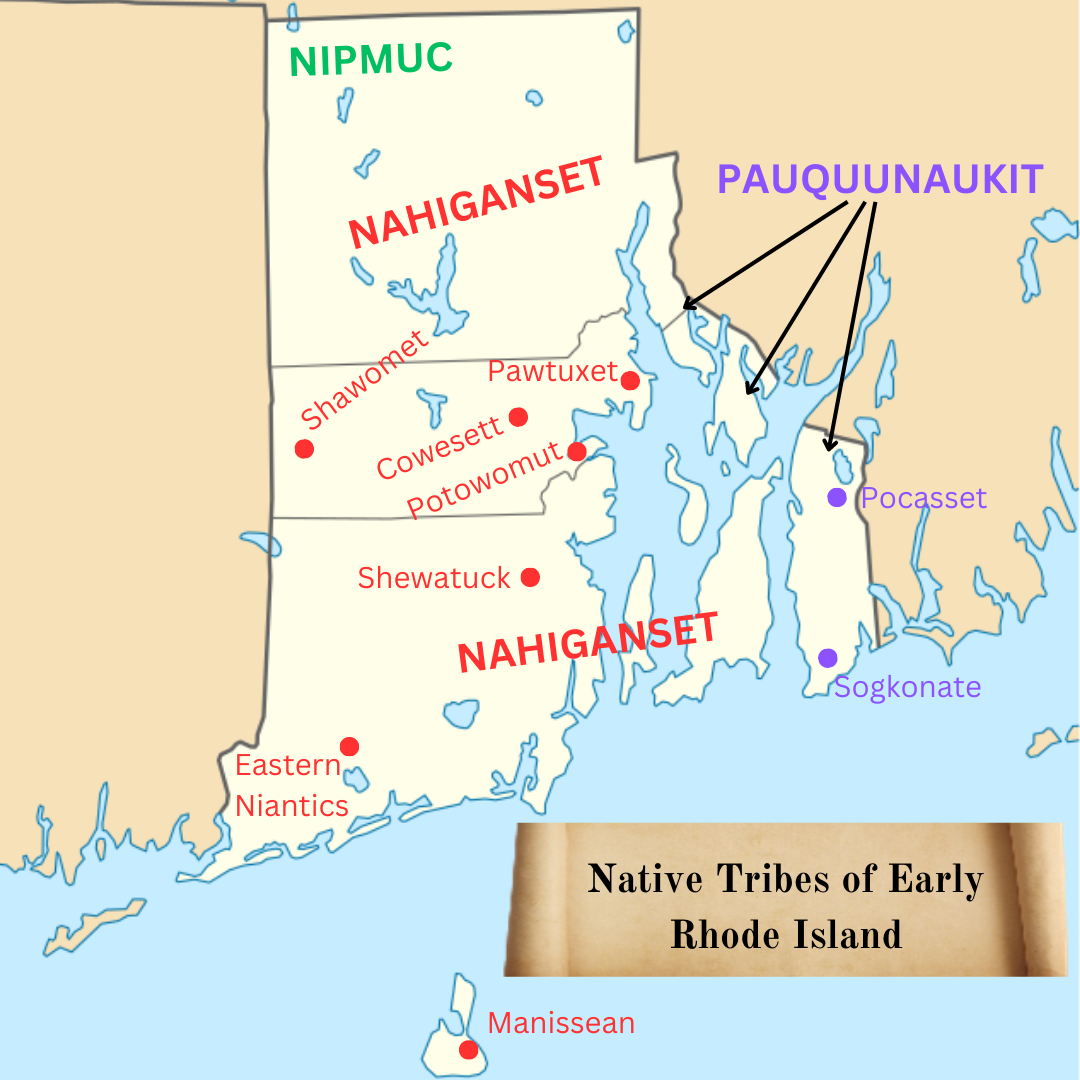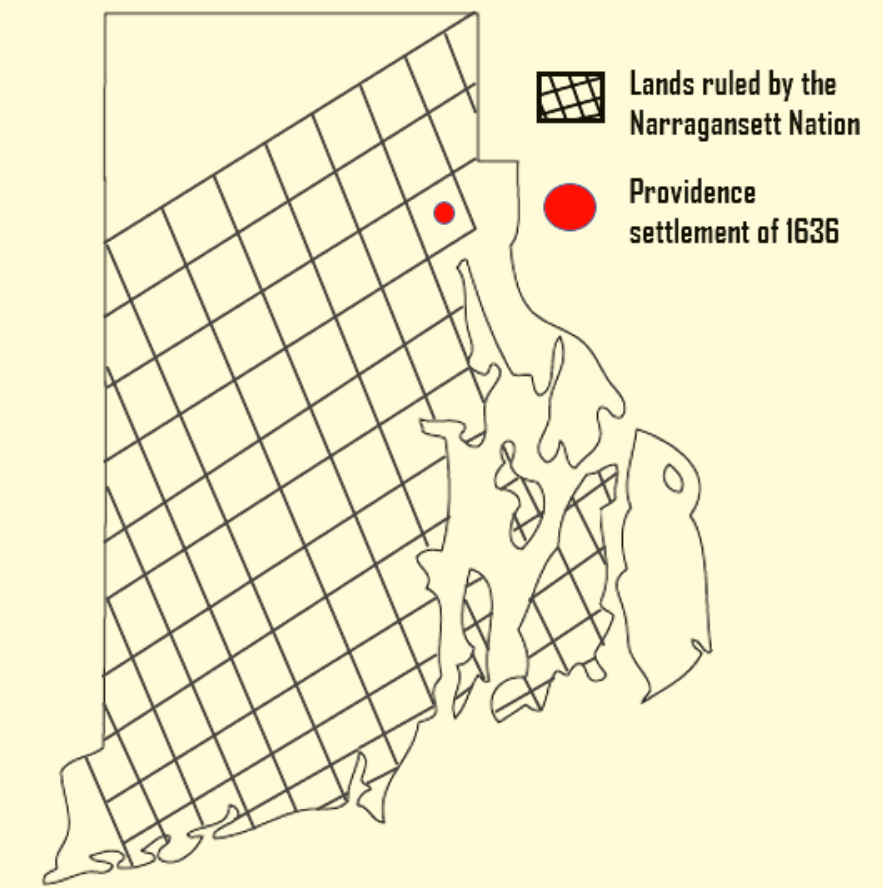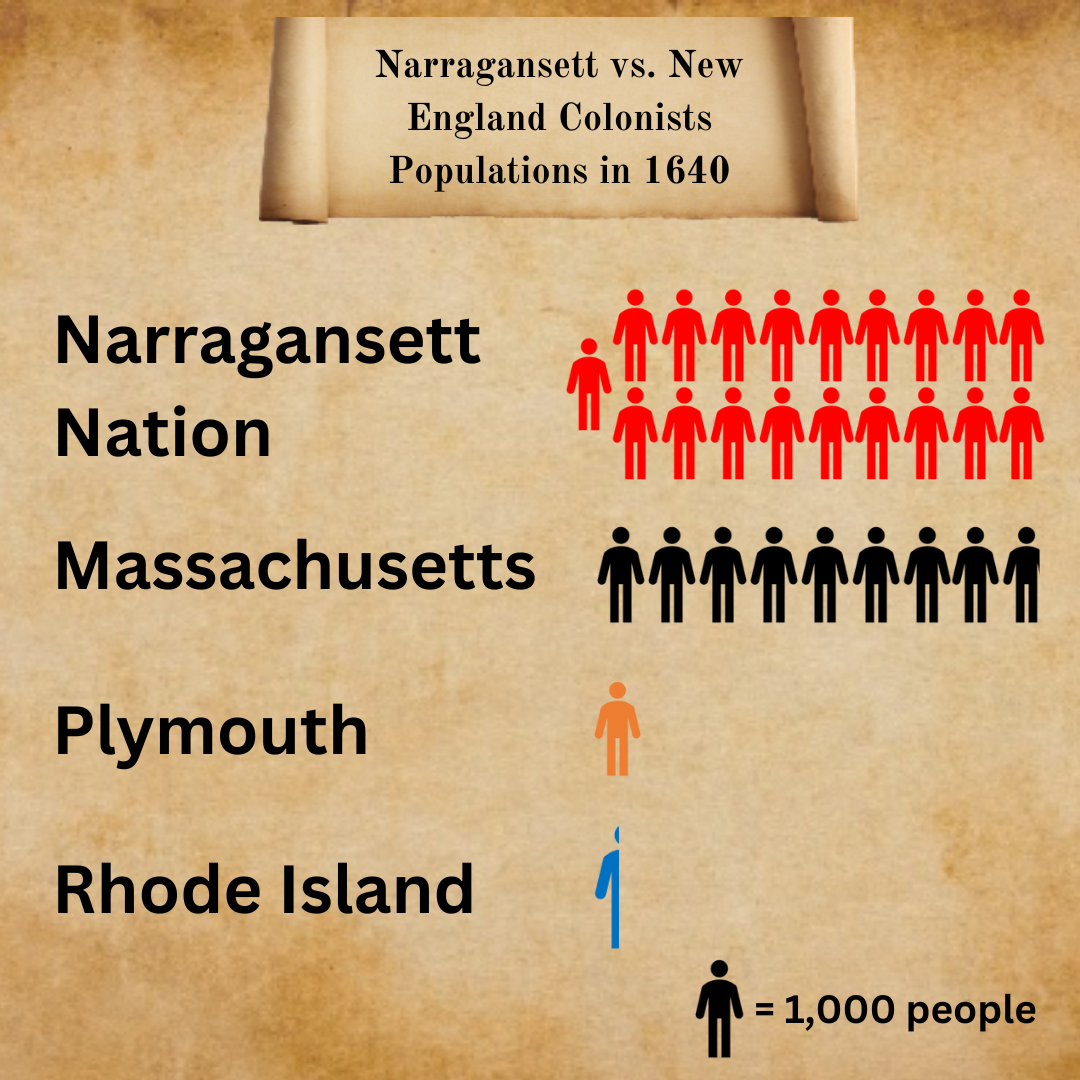In part 1 of this 2 part bonus episode we discuss the Narragansett and Pokanoket tribes and how their lives changed when they began interacting with English colonists.
27 minutes | 1525 - 1637
Hear About:
📜The lives of Rhode Island's indigenous people before the arrival of Europeans.
📜The Rhode Island tribe that was the first to welcome and develop a political alliance with the Pilgrims of Plymouth Colony.
📜How the Sachems or leaders of Rhode Island's indigenous tribes navigated a drastically changing world.

Canonicus
Co-Sachem of the Narragansett people during the first half of the 17th century.
Photo source - James Charles Armytage - New York Public Library: http://digitalgallery.nypl.org/nypldigital/id?806876
Miantonomi
Co-Sachem of the Narragansett people during the first half of the 17th century and newphew of Canonicus.
Osamequin
Massasoit or "grand leader" of the Pokanoket people (later referred to as the Wampanoag).
Photo source - Jessie Hodge, September 30, 2015, flickr
.png)
Cocumscussoc | Wickford, RI
Cocumscussoc is the anglancized version of the Narragansett word "Cawcawmqussick" which means “a place of marshy meadows”. Today we know this area as Wickford but people have been living on this land for about 20,000 years. The Narragansett people established villages on the land and used it to grow their collection of crops known as the "three sisters" which consisted of maize, beans, and squash. Next time you visit the area take a short hike to the little known Mill Cove Bridge and on your walk you'll see one of the Wickford Walk tour signs that details what life was like for the indigenous people who lived in Cawcawmqussick.





The Pequot Path | Providence - Westerly, RI
Before the arrival of Europeans, the Narraganset people traveled throughout the land that now makes up Rhode Island via canoe and dirth paths. It's believed that one of those ancient paths is still roughly traveled by Rhode Islanders today. To the Narragansett people, it was known as the Pequot Path because it led them into Pequot territory in present day southeastern Connecticut but we know it today as Route 1 and 1a.

Indigenous People of Rhode Island
Before the arrival of Europeans in New England, there were three primary tribes who ruled the land that now makes up Rhode Island. In the northwest were the Nipmuc who also spread into central Massachusetts, the Pauquunaukit (Pokanoket, sometimes referred to as the Wompanoag) in the east, and the Nahiganset (Narragansett) who ruled most of the land that now makes up Rhode Island.





Fort Ninigret
Fort Ninigret is named after the 17th century Niantic Sachem of the Niantic people (sub tribe of the Narragansetts), Ninigret. However, it's not clear that the Niantic people were actually the ones who built the fort as some believe that it was built by Europeans. Either way, the fort's location played an important role in the area before Roger Williams ever arrived in America. The Niantic people created Wampumpeag at this location so that they could trade with Dutch visitors in the early 1600s. These encounters underscore the fact that Roger Williams, upon being expelled from Massachusetts in the mid-1630s, did not enter a desolate and uninhabited wild. Instead, he found himself in a landscape rich with intricate social and economic systems.





Family Tree of Narragansett Sachems
According to oral history, before the reign of Canonicus and Miantonomi, the head Sachem of the Narragansett people was Tashtassuck. Since Tashtassuck believed that nobody was noble enough to marry his son and daughter, he had his two children marry eachother. One of the children that came from that marriage was Canonicus.

Territory Ruled by the Narragansett Tribe in 1636
Aside from the Nipmuc Tribe in northwestern Rhode Island and the Pokanokets in eastern Rhode Island, pretty much all of land that now makes up America's smallest state was once ruled by the Narragansett Tribe.

Population of the Narragansett People vs. English Colonists in 1640
Even a couple of decades after Europeans began creating permanent settlements in New England, the Narragansett people still drastically outnumbered their European counterparts. Not only were their military powers well respected but their great Sachems, Canonicus and Miantonomi, brilliantly adapted to rapidly changing economic and political conditions as well.
The amazing story of Squanto aka Tisquantum
Squanto's saga is a tale ripe for the telling, so compelling it could fill episodes of a podcast. Born into the Patuxet Tribe in what is now Plymouth, Massachusetts, in the waning years of the 16th century, his life took a dramatic turn in 1605. English explorer Captain George Weymouth captured him, taking him to England where Squanto learned the English language. His journey led him back to America alongside John Smith, serving as Smith's interpreter. His time in New England was cut short when, in 1614, he was abducted once more by Captain Thomas Hunt and sold into slavery in Spain. Demonstrating remarkable resilience, Squanto escaped and navigated his way back to England, setting the stage for his return to America in 1619. Tragically, during his absence, a devastating plague ravaged eastern New England, decimating up to 90% of the indigenous populations, leaving nothing but ghost villages of his people. Upon the Pilgrims' arrival in 1620, Squanto found a new role as an interpreter for Osamequin and the Pokanokets in eastern Rhode Island. Tensions rose when it was uncovered that Squanto sought to usurp Osamequin, leading to a death warrant that the English, valuing his interpretive skills too highly, refused to execute. The mysteries of Squanto's life culminated in his untimely death in 1622, under suspicious circumstances that led historian Nathaniel Philbrick to speculate about possible poisoning by Osamequin.
- A History of the Narragansett Tribe of Rhode Island: Keepers of the Bay by Robert A. Geake
- God, War, and Providence: The Epic Struggle of Roger Williams and the Narragansett Indians against the Puritans of New England by James A. Warren
- Manitou and Providence: Indians, Europeans, and the Making of New England, 1500-1643 by Neal Salisbury
- Changes in the Land: Indians, Colonists, and the Ecology of New England by William Cronon
- The Lands of Rhode Island as They Were Known to Caunounicus and Miantunnomu When Roger Williams Came in 1636 by Sidney Smith Rider
- VIDEO: Bob Geake: Goat Island and Cocumscussoc
- VIDEO: 350th Anniversary Speaker Series: Loren M. Spears
- WEBSITE: The Narragansett Indian Tribe